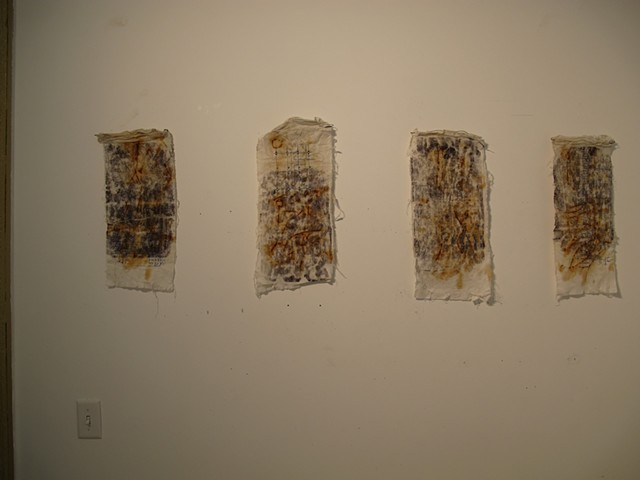Lectric Schematics
What happens when the context of a schematic is removed? The diagram is rendered useless and becomes strictly a series of ornate patterns. This is the impetus for my work. Specifically, I examine and distill symbols from electrical circuit diagrams and appropriate them as patterns. Through this process I re-image the symbols as a forgotten language, a form of hieroglyphs.
A schematic diagram represents the elements of a system using abstract, graphic symbols rather than realistic pictures. A schematic usually omits all details that are not relevant to the information the schematic is intended to convey, and may add unrealistic elements that aid comprehension. For example, a subway map intended for riders may represent a subway station with a dot; the dot doesn't resemble the actual station at all but gives the viewer information without unnecessary visual clutter. In an electronic circuit diagram, the layout of the symbols may not resemble the layout in the physical circuit. In the schematic diagram, the symbolic elements are arranged to be more easily interpreted by the viewer.
I examine these ruins through a post structuralist linguistic scrim, meaning I deconstruct the maps of symbols to develop a new language built from the fragments. This process is an exploration of decoration as a new mode for content. I look to the history of textiles as an example of early forms of text. The tapestries and clothes created by the Paracas culture, the pre-Ashanti in West Africa and ancient Pueblo are the foundation for my fascination with weaving and painted cloth. Departing from these cultures, I compose symbols using traditional techniques and materials combined with new media. The conflation of the "ancient and futuristic" blurs the understanding of an object's place in time, and identifies a post modern emphasis on nonlinear timelines.
My interest in electrical schematics is two fold. These diagrams are emblematic of contemporary communication. The symbols are the abstract signifiers for an electrical language and are hidden under screens or displays. This relationship parallels ancient textiles, the dazzling patterns in the cloth also carry a content accessible only to an elite few who knew how to read them. The aesthetics and legibility create a tension between decoration and function, which are often considered oppositional terms in modern art. In my work I attempt to blend the two aspects together, establishing the decoration as a function.
More broadly, I work with technology, painting and textiles in an effort to create art work that reveals a disconnection between progression and history. In my experience artwork that typically combines the elements of fibers and technology are progressive and industry driven, or commercial-craft based such as the work of Joanna Berzowska and Syuzi Pakhchyan. The approach I employ focuses on the failure of this combination, when the cords tangle, the cloth tears. What are the unexpected results of chaos and miscommunication? What metaphors can be gleaned from the fractured voice or the forgotten language?














